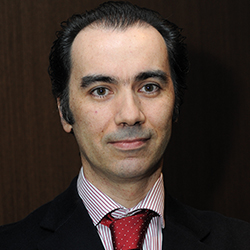
Paulo Vilares Morgado, Interventional Radiology Unit, University Hospital S João, Porto, Portugal, presented the results of a prospective randomised controlled trial, AGIR (Angio-Seal in Interventional Radiology), at CIRSE 2015.
The trial compares the efficacy of the Angio-Seal (St Jude Medical) vascular closure device to manual compression in interventional radiology procedures to control haemostasis at the access site.
AGIR is a multicentred, international, prospective, study, with stratified randomisation in which patients had their arterial puncture closure randomly performed either by an Angio-Seal vascular closure device or by manual compression. The population of patients was studied to compare mobilisation time, complications relating to the closure, risk increase, time to haemostasis, immediate haemostasis success, Angio-Seal deployment success and the time till patient discharge.
Vilares Morgado and his team studied a total of 123 patients during 18 months of enrolment. All the patients were discharged and 111 were followed up for two weeks (±1week). The mobilisation time in over 85% of patients randomised to the Angio-Seal device group was less than four hours compared to just over 22% of patients randomised to the manual compression group (p<0.0001).
“The proportion of complications at any time of the study duration was 9.8% in the Angio-Seal device group and 9.7% in the manual compression group (p=0.24). In the Angio-Seal device group, there were seven complications (two haematomas <6cm, two significant bleeds, and three minor complications) in five patients (8.2%) and in the manual compression group, there were eight complications (two haematomas <6cm, four haematomas >6cm, and two significant bleeds) in six patients (9.68%),” noted Vilares-Morgado.
The conclusion to the trial stated that the Angio-Seal is a safe vascular closure device that significantly reduces the mobilisation time without increasing the risk for the patients. Regarding complications, there were no significant differences between the two groups of treatment.












